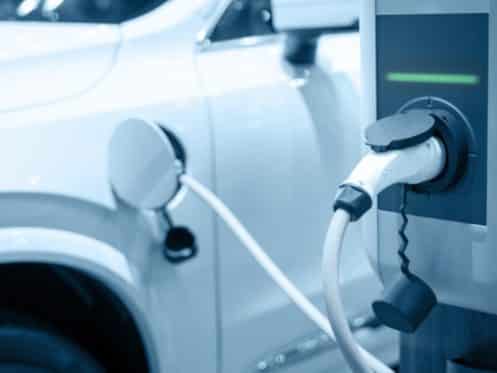Electric vehicles (EVs) are definitely the way of the future. There have been huge advancements in technology in the past decade or so that have helped to make EVs more affordable, more powerful and have a much better range. Nonetheless, one issue that many people don’t consider about EVs is the effect that cold temperatures have on both charging rate and range, and this is what we’re looking into today.
How Cold Affects EV Charging Rate
The ideal temperature for charging an EV’s battery is somewhere between 60 and 80 degrees Fahrenheit, and this has to do with the chemical reaction that occurs inside the battery when it charges. It is important to note that it is the temperature of the battery itself that matters and not the air temperature. Charging a cold battery at its normal rate would put a huge amount of stress on it and could easily damage the battery and degrade its capacity.
If the battery temperature is around 77 degrees, it will charge at its normal rate until it reaches approximately 80% charge. From there, the charging rate will slow in order to prevent possible damage to the battery. Studies have shown that if you were to charge a battery when it was 32 degrees, it would receive around 36% less power than if you charged it for the same number of hours when the battery was 77 degrees.
Let’s say that you have a level 2 EV charging station at your home, and it normally takes you around 8 hours to fully charge your battery when it’s empty. If the battery temperature was close to freezing when you started charging, it could take close to three additional hours for your battery to fully charge. This is important to consider as it means that you may need to plug your EV in earlier than usual to ensure that the battery is fully charged in the morning.
How Charging Rate Is Determined
All EV batteries have a built-in thermal management system that detects the battery temperature and works in conjunction with the vehicle’s battery management system (BMS) to dictate the rate of charging. This means that it is the vehicle itself that dictates the rate of charging and not the charging station since it always puts out the same amount of power.
Whenever the battery is cold, the BMS will slow down the charging rate to ensure that the battery is charged safely. The battery will slowly continue to warm up as it charges. As the temperature of the battery gets closer to its ideal charging range, the BMS will slowly increase the limits so that the battery charges more quickly.
How Cold Temperatures Affect EV Range
Cold doesn’t just affect the rate at which an EV battery charges but also how many miles you can drive before the battery dies. The range of an EV is always at least somewhat lower in colder temperatures than it is in warm weather. In temperatures around freezing, the average EV’s range will be reduced by around 20%. This means that if your vehicle can normally go 200 miles on a full charge, its range may only be 160 miles in cold weather.
While 20% may sound like a lot, the truth is that all vehicles have a shorter range in cold weather. Gas-powered vehicles also have a decreased efficiency in cold weather and will typically only achieve around 80 to 90% of their normal miles per gallon.
The main reason for the decreased efficiency is the extra power needed to run the vehicle’s heating system. The reason that cold doesn’t affect gas vehicles as much as it does for EVs is that gas engines produce a lot more heat, and they use this heat to help keep the vehicle warm.
The other reason that the range of an EV decreases in cold weather is that it has to use some of the stored energy to keep the battery warm. Keeping the battery warm is essential. Otherwise, it would drain at a much faster rate if it ever got too cold.
An EV typically reserves around 20% of its power to warm the battery. This is why it is never recommended to let your battery drop below a 20% charge during the winter, or else you may not have sufficient power to keep the battery warm and reach your destination.
Tips for Minimizing the Effect Cold Has on Your EV
Although the Glendale area typically experiences fairly mild winters, it can still get quite chilly and especially at night. The best way to minimize the impact that cold has on your EV’s charging rate is to park the vehicle inside and charge it inside whenever possible to help keep the battery warmer. Having a level 2 EV charging station at your house can provide major benefits by ensuring that you can always charge your vehicle in the garage where it is warmer.
You can also help to improve your EV’s range in cold weather by always making sure to fully warm up the vehicle before you start driving. This will help to warm up the battery so that it no longer has to use as much energy to heat itself as you’re driving. If you were to start driving when your battery was still extremely cold, you’d use up a lot of energy at first just to warm the battery, and your range will be much lower. If possible, it is always best to warm up your vehicle before you unplug it so that you can ensure you still have a full charge when you head out.
Even when you’re not charging your vehicle, it is still always best to keep it parked inside whenever possible to prevent the battery from getting as cold. Even using a parking garage is preferable to leaving the vehicle outside since parking structures will almost always be at least slightly warmer and thus prevent your battery from getting as cold.
Cold weather will always at least slightly reduce your range due to the energy needed to keep your battery warm. However, your range will be decreased even more if you leave your heating on constantly. According to AAA, driving in freezing temperatures with your heating running will reduce your range by more than 40% on average.
This means that limiting the amount of time that your EV’s heating system runs or turning the heat way down can also help to improve its range in cold weather. Whenever possible, it is always better to use your seat warmer and steering wheel heater to help keep you warm since they use far less energy than running your heating system. The less time that your heating runs, the more energy you will conserve, and the less your range will decrease.
You should also always make sure that you have a backup plan during cold weather in case your range suddenly drops much lower than you’d expected. This means making sure that you know where there are public charging stations available so that you don’t run the risk of your battery dying and leaving you stranded.
If you’re interested in having an EV charging station at your home, Christian Brothers Air Conditioning Plumbing Electrical is ready to help. We install residential EV chargers, and we also offer a wide range of other electrical repair or installation services. We also have a team of certified plumbers that can handle any of your plumbing needs, as well as certified HVAC technicians that specialize in heating and cooling maintenance, repairs and installation. If you have any questions about home EV charging stations or the impact that cold has on them, give Christian Brothers Air Conditioning Plumbing Electrical a call today.










